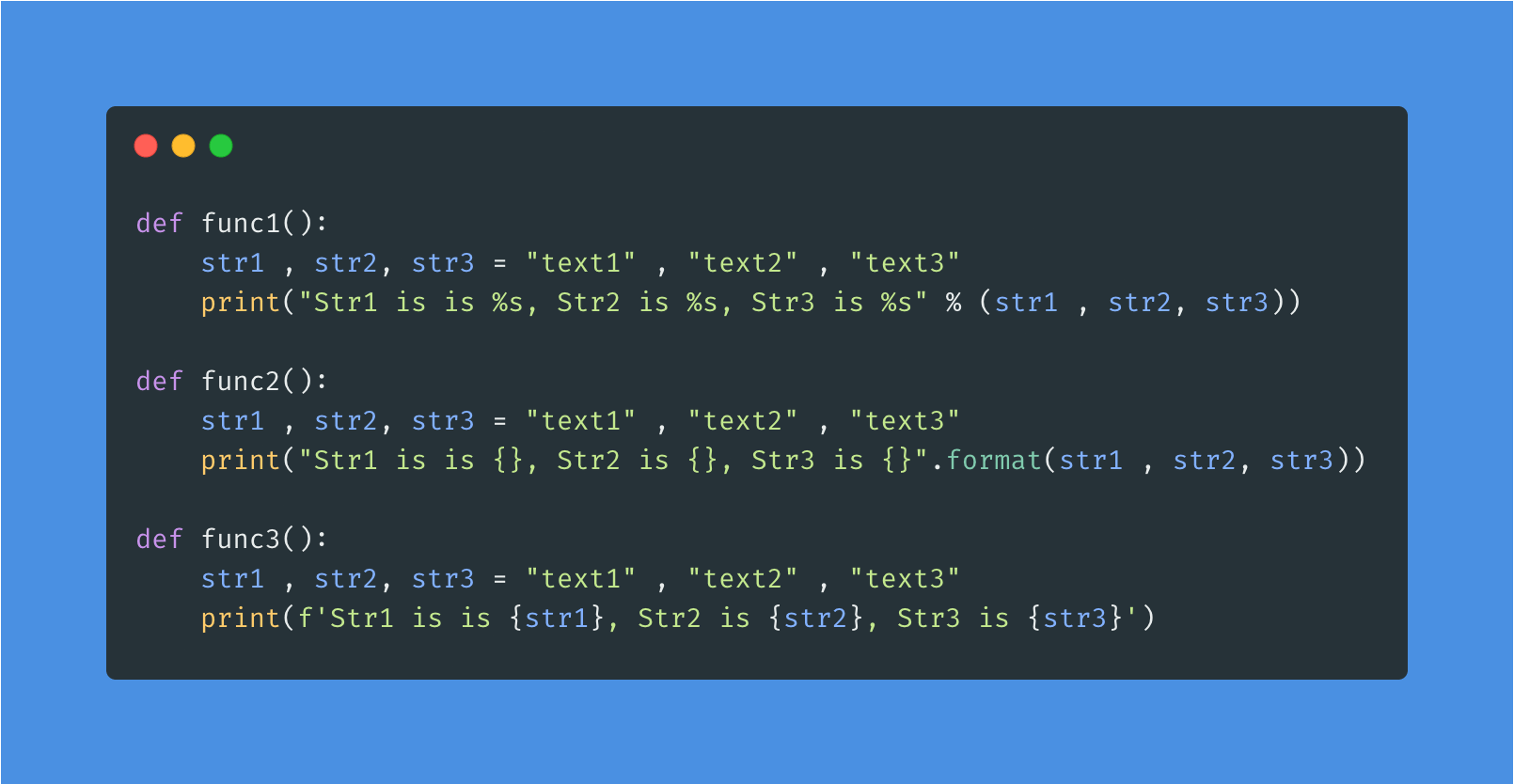There are 3 ways to format strings in Python
- Using the % operator
- Using format()
- Using f strings

We have three functions
- func1 uses the % operator
- func2 uses format()
- func3 uses f strings
We will use the timeit function to measure the time taken by each function

We call each function 100 times and calculate the average time taken for the function call. The average time is stored in a list.

Below are the comparisons of the 3 functions

As you can see, f strings are faster as compared to format() and the % operator.
if.....else with f strings
num = 2
print(f"{num} is an {'even' if num%2 ==0 else 'odd'} number")
num = 3
print(f"{num} is an {'even' if num%2 ==0 else 'odd'} number")
Aligning strings
- Left-aligned: {variable :> number}
- Center-aligned: {variable :^ number}
- Right-aligned: {variable :< number}
text = "string"
print(f'{text:>20}')
print(f'{text:^10}')
print(f'{text:<30}')
'''
OUTPUT
string
string
string
'''
Round floating points
num = 20.012345783
print(f'{num:0.3f}')
'''
OUTPUT
20.012
'''
Pad Zeroes
x = 10
print(f'{x:0}') #10
print(f'{x:02}') #10
print(f'{x:03}') #010
print(f'{x:04}') # 0010
If you want to pad n zeroes to a y digit number, it should be
print(f'{x:0n+y}')

